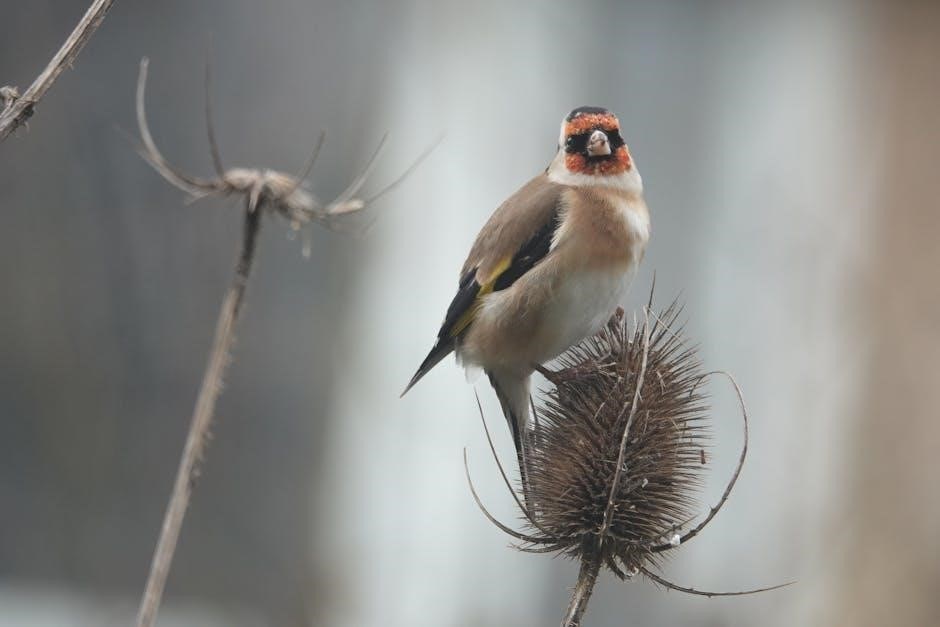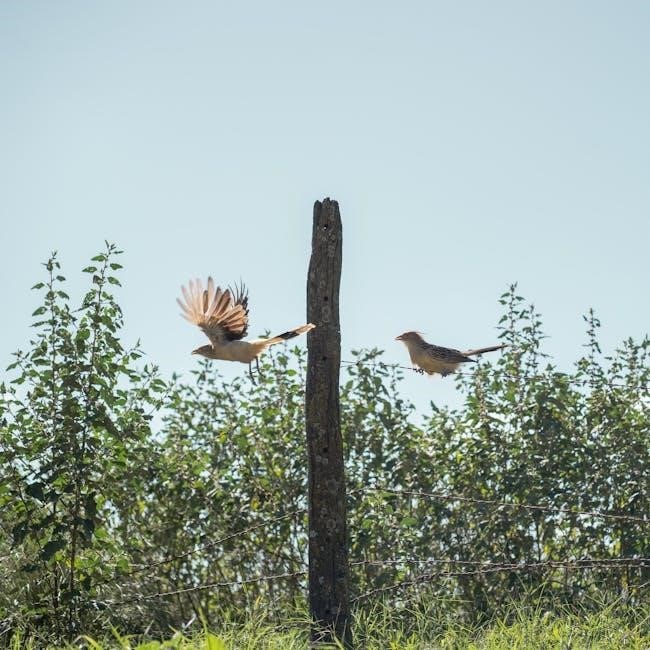
birds of california field guide
Embark on a journey of avian discovery with a comprehensive field guide to the birds of California. These guides are essential tools for identifying the diverse bird species in this biodiverse state.
California, with its diverse landscapes, offers unparalleled opportunities for birding. From the rugged coastline to the towering Sierra Nevada, and the arid deserts to lush valleys, a wide array of habitats supports a remarkable diversity of bird species.
Birding in California is an engaging hobby that connects you with nature while challenging your observation skills. Whether you are a seasoned birder or a novice, California’s avian wonders await. The state is home to resident birds and migratory species, making every season a unique birding experience.
Understanding bird identification is key to enjoying and appreciating the birds around you. This begins with familiarizing yourself with the features of a field guide.
Why Use a Field Guide?

A field guide is an indispensable tool for anyone interested in birding, whether you’re a beginner or an experienced enthusiast. It serves as a visual and informational aid, enabling you to accurately identify bird species in their natural habitats. Without a reliable field guide, distinguishing between similar-looking birds can be challenging.
Field guides provide detailed descriptions, illustrations, and range maps, allowing for quick comparisons and accurate identification. They also often include information about bird behavior, habitat preferences, and vocalizations, enriching your understanding of each species. Using a field guide enhances your birding experience by transforming sightings into confident identifications.
Ultimately, a field guide is a gateway to deeper appreciation.
Key Features of a Good Field Guide
A top-notch field guide should boast several key features for effective bird identification. Clear and accurate illustrations or photographs are paramount, showcasing plumage variations across different ages and sexes. Detailed descriptions of key field marks, such as wing bars, eye-rings, and tail patterns, are essential for distinguishing between similar species.
Range maps illustrating the geographic distribution of each bird are crucial, helping to narrow down possibilities based on location. Information on habitat preferences and typical behaviors provides additional clues for identification. A well-organized layout with an easy-to-use index facilitates quick referencing.
Finally, portability is key.

Consider these before purchase.

Popular California Bird Field Guides
Discover the most popular and reliable field guides for bird identification in California. These resources offer valuable insights and detailed information to help bird enthusiasts of all levels.
Sibley Birds West
Sibley Birds West, authored by David Allen Sibley, is a highly regarded field guide known for its detailed illustrations and comprehensive coverage of bird species found in the western United States, including California. This guide is a favorite among birders due to its accuracy and user-friendly layout.
The guide features Sibley’s meticulously drawn illustrations, which showcase the subtle variations in plumage, allowing for precise identification. It provides in-depth information on bird behavior, habitat, and vocalizations, enhancing the identification process. Sibley Birds West is an essential resource for both beginners and experienced birders seeking to identify birds in California’s diverse landscapes. Its comprehensive nature makes it a go-to reference for bird identification.
Birds of California (Tekiela)
Birds of California, by Stan Tekiela, is a field guide designed for easy bird identification, particularly suited for beginners. This guide features clear photographs and concise descriptions of bird species commonly found in California. Tekiela’s guide focuses on providing essential information in an accessible format.
The guide organizes birds by color, making it easier for novice birders to quickly narrow down potential matches. Each entry includes key identification points, habitat preferences, and interesting facts about the bird. Birds of California is a practical choice for those new to birding or those seeking a straightforward and visually appealing guide for identifying birds in California’s diverse environments. It is favored for its simplicity and user-friendliness.
Birds of Southern California (Garrett, Dunn, and Small)
Birds of Southern California, authored by Kimball L. Garrett, Jon L. Dunn, and Brian E. Small, is a detailed resource for identifying birds in the region. This comprehensive guide provides in-depth information on over 500 species, covering their plumage, habitat, behavior, and vocalizations. Brian Small, a professional wildlife photographer, contributes to the guide with high-quality images.
The book includes detailed species accounts, distribution maps, and helpful identification tips, making it suitable for experienced birders and researchers. It emphasizes the unique avian diversity of Southern California, addressing various habitats and seasonal variations. With its meticulous approach, this guide is invaluable for those seeking an authoritative and thorough understanding of Southern California’s birdlife.

Essential Elements of Bird Identification
Successfully identifying birds requires attention to key elements: visual cues like plumage, understanding size and shape, observing habitat preferences, and noting specific behaviors. These factors combine for accurate identification.
Visual Identification: Plumage and Markings
Plumage and markings are crucial for bird identification. Color patterns, distinct markings, and variations in feather arrangements offer key clues. Note the overall color scheme of the bird, including the presence of stripes, spots, or patches.

Pay attention to specific markings like eye-stripes, wing bars, or throat patches, as these can differentiate species. Also, consider the bird’s physical structure such as long-tailed, lanky songbird with a deeply curved bill, the California Thrasher. Examine the tail shape, wing shape, and bill shape.
Variations in plumage can also indicate the bird’s age or sex. Younger birds often have duller plumage than adults. Seasonal changes may also affect a bird’s appearance. Observing these visual cues carefully is essential for accurate identification. Consider consulting field guides with artist renditions for visual aids.
Size and Shape
Estimating a bird’s size and observing its shape are fundamental steps in identification. Comparing the bird’s size to familiar species, such as a sparrow, robin, or crow, provides a useful reference point. Is it smaller than a sparrow, about the size of a robin, or larger than a crow?

Note the overall body shape, including the length of the neck, legs, and tail. Is the bird slender and streamlined, or stocky and round? Consider the shape of the bill. Is it long and curved, short and conical, or flat and broad?
These features, in combination with plumage and markings, help narrow down possibilities. Observing the bird’s posture and how it holds its wings can also give you clues. Remember that size and shape can vary slightly depending on the bird’s position and behavior, so observe carefully and consider multiple angles.
Habitat and Behavior
A bird’s habitat and behavior offer crucial clues for identification. Different bird species are adapted to specific environments, such as forests, grasslands, wetlands, or coastal areas. Note the type of habitat where you observe the bird. Is it in a dense forest, an open field, near water, or in an urban area?
Observe the bird’s behavior. How does it move? Does it hop, walk, or run? How does it feed? Does it forage on the ground, glean insects from leaves, or hunt in the air? Listen to its calls and songs. Does it have a distinctive melody, a series of chirps, or a harsh squawk?
Consider whether the bird is solitary, in a pair, or part of a larger flock. Habitat and behavior, combined with physical characteristics, provide valuable insights into a bird’s identity.

Common Bird Species in California
Explore the fascinating world of California’s common bird species, from backyard favorites to unique regional inhabitants. Learn to identify and appreciate the avian diversity around you.
Backyard Birds of Southern California
Southern California’s backyards are bustling with avian life. Recognizing these common visitors enhances any nature enthusiast’s experience. This section focuses on the frequently observed species in Southern California residential areas. Key identification features, typical behaviors, and preferred habitats within the backyard environment will be highlighted. Learn to distinguish between the various sparrows, finches, and mockingbirds that frequent feeders and gardens.
Understanding the dietary preferences of these birds can also help attract a wider variety to your backyard. Common species include the House Finch, known for its cheerful song, and the Mourning Dove, with its gentle cooing. The California Towhee, a ground-feeding bird, is also a regular sight. Attract these birds and more with the right seeds and environment.
Furthermore, this section will provide tips on creating a bird-friendly habitat by providing shelter, water sources, and native plants. Learn how to coexist with these beautiful creatures while supporting their well-being in your own backyard.

Birds of Santa Clara County
Santa Clara County, with its diverse habitats from bay edges to foothills, hosts a wide variety of bird species. This section will explore common backyard birds, focusing on identification tips specific to the region. Whether you live near the bay or nestled in the hills, understanding your local birds enhances your connection to nature.
Learn to identify species like the scrub jay, with its vibrant blue plumage, or the acorn woodpecker, known for its communal living and acorn storage habits. The section will also cover migratory birds that pass through during different seasons, adding to the county’s avian diversity.
Discover the resources available through the Santa Clara Valley Bird Alliance and other local organizations to deepen your birding knowledge. Explore how different habitats within the county influence the types of birds you are likely to see, and how to create a bird-friendly yard.
California Thrasher
The California Thrasher, a key species of California’s chaparral, is known for its long tail and deeply curved bill. This section will provide detailed identification information, including plumage variations and key markings to differentiate it from other thrashers. Learn about its unique vocalizations, as both males and females sing from shrub tops.
Explore the California Thrasher’s habitat preferences and foraging behavior. As a relative of mockingbirds, the thrasher is an exuberant songster, often duetting with its mate. Understand how this bird plays a vital role in the chaparral ecosystem and how its presence indicates a healthy habitat.
Discover how to identify the California Thrasher by its size, shape, and distinctive movements while foraging on the ground. The section will also cover its diet and nesting habits, offering insights into its life cycle.

Resources for Bird Identification
Explore valuable resources for bird identification, including online tools, local birding organizations, and helpful apps. These resources provide additional support for bird enthusiasts of all levels.
Online Bird Identification Tools
The internet offers a plethora of resources for identifying birds, many of which are particularly useful for birds in California. Websites like All About Birds from the Cornell Lab of Ornithology, provide comprehensive information including photos, song recordings, and detailed descriptions to assist in identification.
These sites often include interactive tools such as bird ID quizzes, and range maps which help narrow down possibilities based on location. Some websites also allow users to upload photos for identification assistance from online communities. These digital resources are invaluable for both beginner and experienced birders.
The Merlin Bird ID app, is a popular example, guiding users through a series of questions or photo analysis to suggest potential matches. Online forums and social media groups dedicated to birding can also be great places to ask for help identifying a bird, often receiving quick and knowledgeable responses from fellow bird enthusiasts.
Local Birding Organizations
California boasts a vibrant network of local birding organizations that offer a wealth of resources and opportunities for bird enthusiasts. These organizations often host guided bird walks, workshops, and educational programs, providing hands-on learning experiences in various habitats throughout the state.
Joining a local birding group can be a fantastic way to connect with experienced birders who can share their knowledge and help you improve your identification skills. Many organizations also contribute to citizen science projects, such as bird counts and monitoring programs, allowing members to actively participate in conservation efforts.
These groups often have extensive knowledge of local hotspots, migration patterns, and rare bird sightings. Additionally, they may offer access to specialized equipment, such as spotting scopes, and provide valuable insights into the best birding locations in your area, enhancing your birding experience and contributing to bird conservation.
Apps for Bird Identification
In the digital age, several innovative apps have revolutionized bird identification, offering convenient and powerful tools right at your fingertips. These apps typically include extensive databases of bird species, complete with high-quality photos, detailed descriptions, and audio recordings of songs and calls.
Many bird identification apps utilize advanced features such as image recognition, allowing you to identify a bird simply by uploading a photo. Some apps also offer sound recognition capabilities, enabling you to identify birds by recording their vocalizations. These features can be particularly helpful for identifying birds in challenging environments.
Moreover, birding apps often include location-based services, providing information on nearby bird sightings, hotspots, and migration patterns. Some apps even allow you to track your own birding observations, create lifelists, and share your sightings with other birders, making them invaluable companions for both novice and experienced enthusiasts alike.


Leave a Reply
You must be logged in to post a comment.